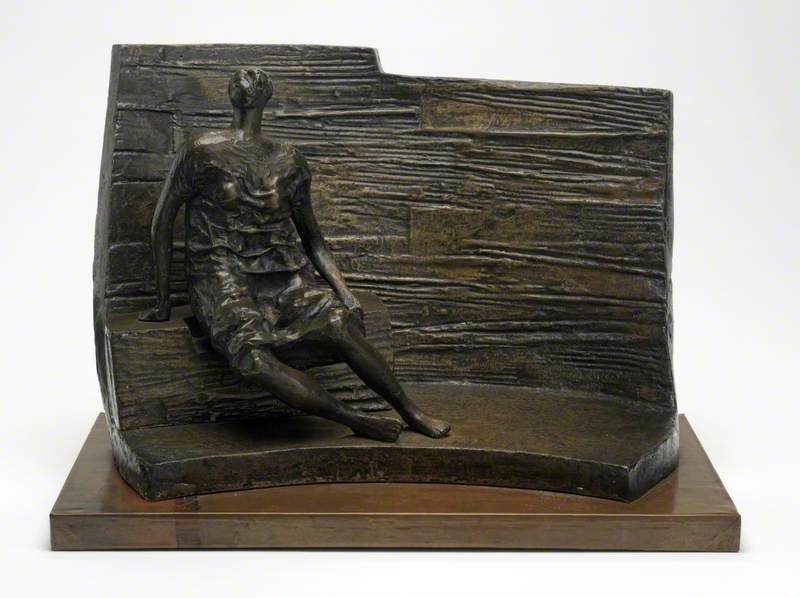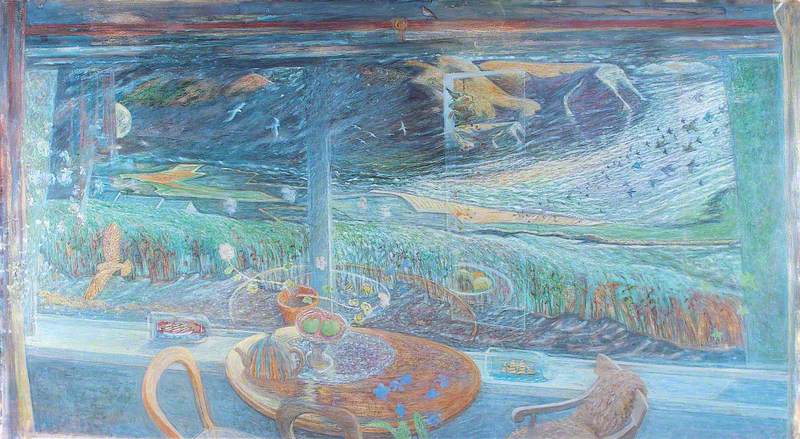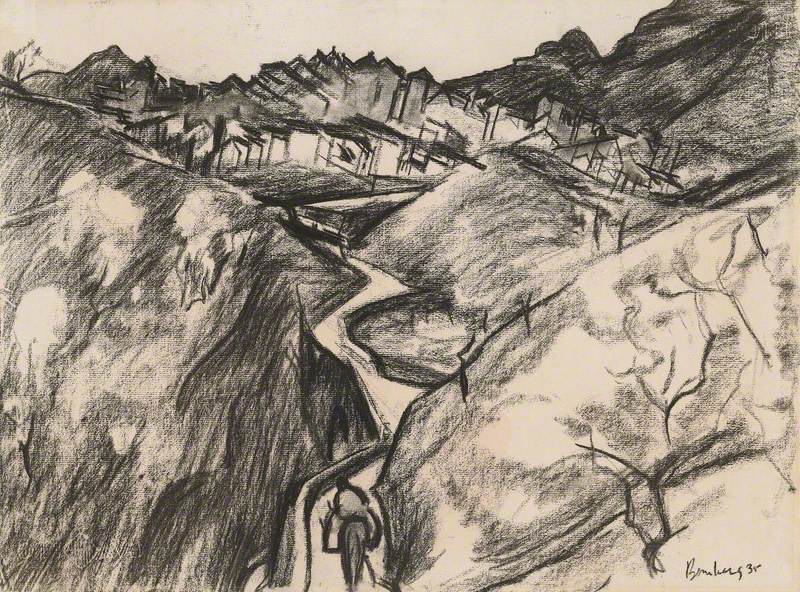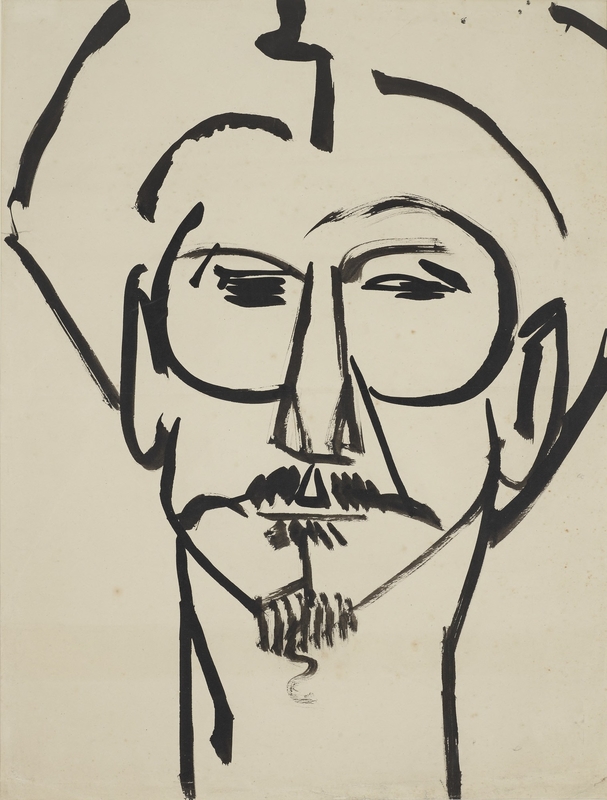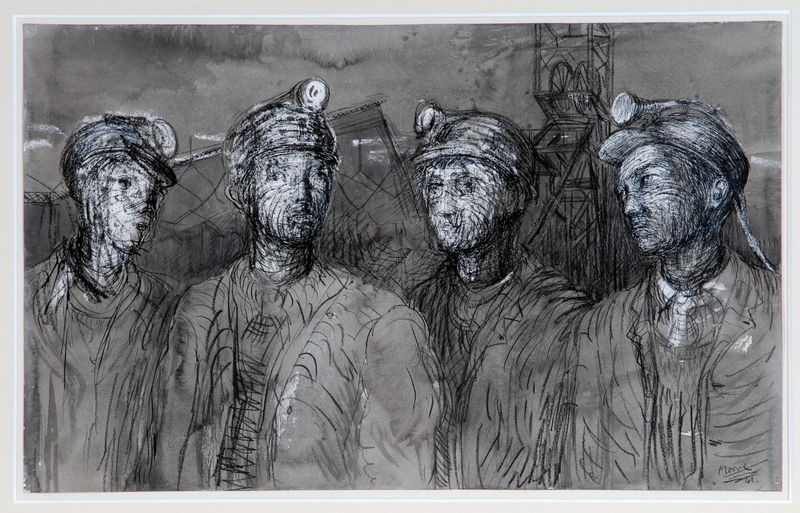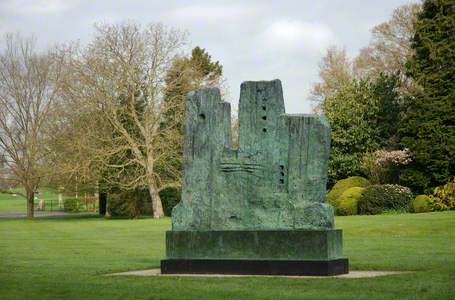War can impact artists in a multitude of ways: visually, emotionally, logistically. When artist Henry Moore's London studio was bombed during the Blitz in 1940, he and his wife moved to a cottage in Hertfordshire. He continued to commute in and out of London regularly and found himself often sheltering from the bombing in tube stations. After his first night in Belsize Park station, he was so profoundly moved by the experience that he began seeking out different bomb shelters around London to draw.
Moore is much better known today for his epic Modernist sculptures, but it was this series of wartime drawings that originally gained him widespread recognition as an artist. They represented an unexpected but powerful way to artistically engage with war, and a clear example of an artist processing his own experience of the trauma of violence and destruction during conflict. These drawings brought Moore's work to a more diverse public and 'cemented his reputation beyond the arts establishment.' Throughout his career, Moore continued to return to drawing, even as he developed his large-scale sculptural practice. These early works were key to his evolution and development as an artist.
Tube Shelter Perspective
1941, wax crayon, coloured crayon, watercolour & wash on paper by Henry Moore (1898–1986) 
Moore never made full-scale drawings while he was in the shelters, out of respect for the people around him. His drawings were based on his memories of the experience, notes he took, and sometimes brief, loose sketches. He often made several iterations of a drawing before making a work he considered complete. The drawings mostly depict women and children, reflecting the demographic make-up of wartime London. This collection of works has come to be known as his Shelter drawings, made between September 1940 and May 1941.
Basement Shelter
1940–1941, pencil, wax crayon, coloured crayon, pen & ink on paper by Henry Moore (1898–1986) 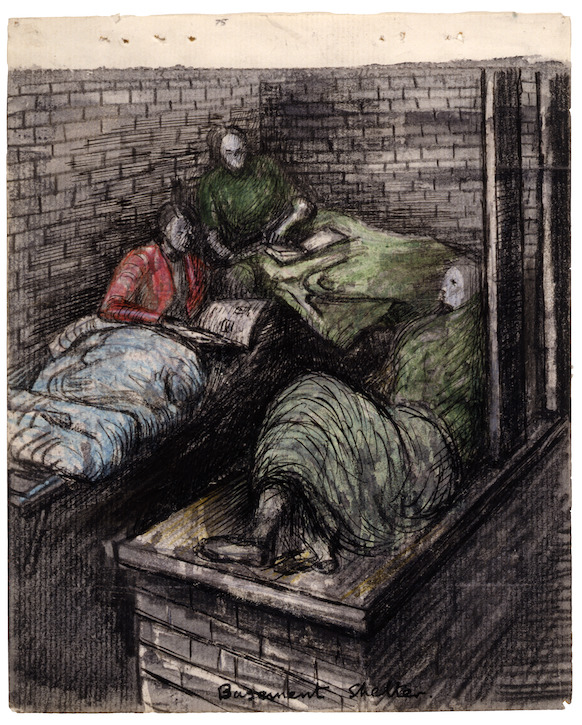
In a new exhibition at The Courtauld Gallery in London, curator Penelope Curtis makes the case for the symbolic centrality of the wall itself in Moore's drawings. Not only does the wall represent the claustrophobia of sheltering, but it also gives the drawings a sense of space and structure that is a precursor to Moore's practice as a sculptor. The texture and construction of masonry, the curving tunnels of the Underground, and the way that a space felt and formed were all key subjects for him. His preoccupation with built environments and how they function visually was a motif that carried through later drawings after his Shelter works.
Phemius and Telemachus
1944, pencil, wax crayon, coloured crayon, watercolour wash, pen & ink on paper by Henry Moore (1898–1986) 
In 1943, Moore was commissioned by Edward Sackville-West to illustrate a radio play called The Rescue, which tells the story of Odysseus's return to Ithaca at the end of his famous odyssey. Based on Homer's original epic but adapted for contemporary listeners, it was designed to draw parallels between Ancient Greece and Greece at the time, which was under Nazi occupation. The drawings he made for this project are very much in conversation with his slightly earlier Shelter drawings. They have a similar sense of claustrophobia and pathos, and they are obsessed with spatial construction.
One of these drawings, Death of the Suitors, depicts the aftermath of Odysseus's slaughter of the many suitors he found fawning over his wife Penelope when he returned. He had been gone for many years, and was assumed to be dead, but Penelope still waited for him. The drawing is raw and violent, depicting a self-contained, box-like space strewn with limp bodies. The visual connection with the Shelter drawings, filled with similarly powerless, still bodies, is clear – though they depict a moment before potential violence, still pulsing with life. The Rescue project 'speaks with profound unity of the necessity of art in times of war. It insists on the eventual restoration of peace and harmony,' writes Charlotte de Mille in the exhibition catalogue.
Henry Moore drawing 'Textile Design'
1943, photograph by Perry Green 
Moore also collaborated to create textile designs that took inspiration from his exploration of walls in the 1940s. Printed by Zika Ascher, the wall hangings were compared to those of Henri Matisse. Moore's were more figurative, making them more akin to tapestries than the blocky, decorative work of Matisse.
In 1955, he began making small sculptural reliefs that have been described as 'sketches' because of their small size and casual nature. Flat, like walls, they are characterised by forms protruding from a surface. He also started making small sculptures of figures in front of walls, intriguingly creating space and structure in the sculpture itself. Eventually, in the late 1950s and 1960s, Moore began incorporating walls into his large-scale sculptures, like The Wall: Background for Sculpture.
The beginning of this exploration of walls, their surfaces, flatness, and ways of making space, began in Belsize Park tube station in 1940. The long and powerful impact of the Blitz on Moore's work was complex in the ways it manifested in his work and was fundamentally based in the practice of drawing. His haunting, claustrophobic work continues to resonate today.
Eliza Goodpasture, Commissioning Editor – Drawings at Art UK
This content was funded by the Bridget Riley Art Foundation
'Henry Moore: Shadows on the Wall' is on view at The Courtauld Gallery until 22nd September 2024
Further reading
Alexandra Gerstein and Ketty Gotardo (eds), Henry Moore: Shadows on the Wall, 2024, The Courtauld Gallery and Paul Holberton Publishing


